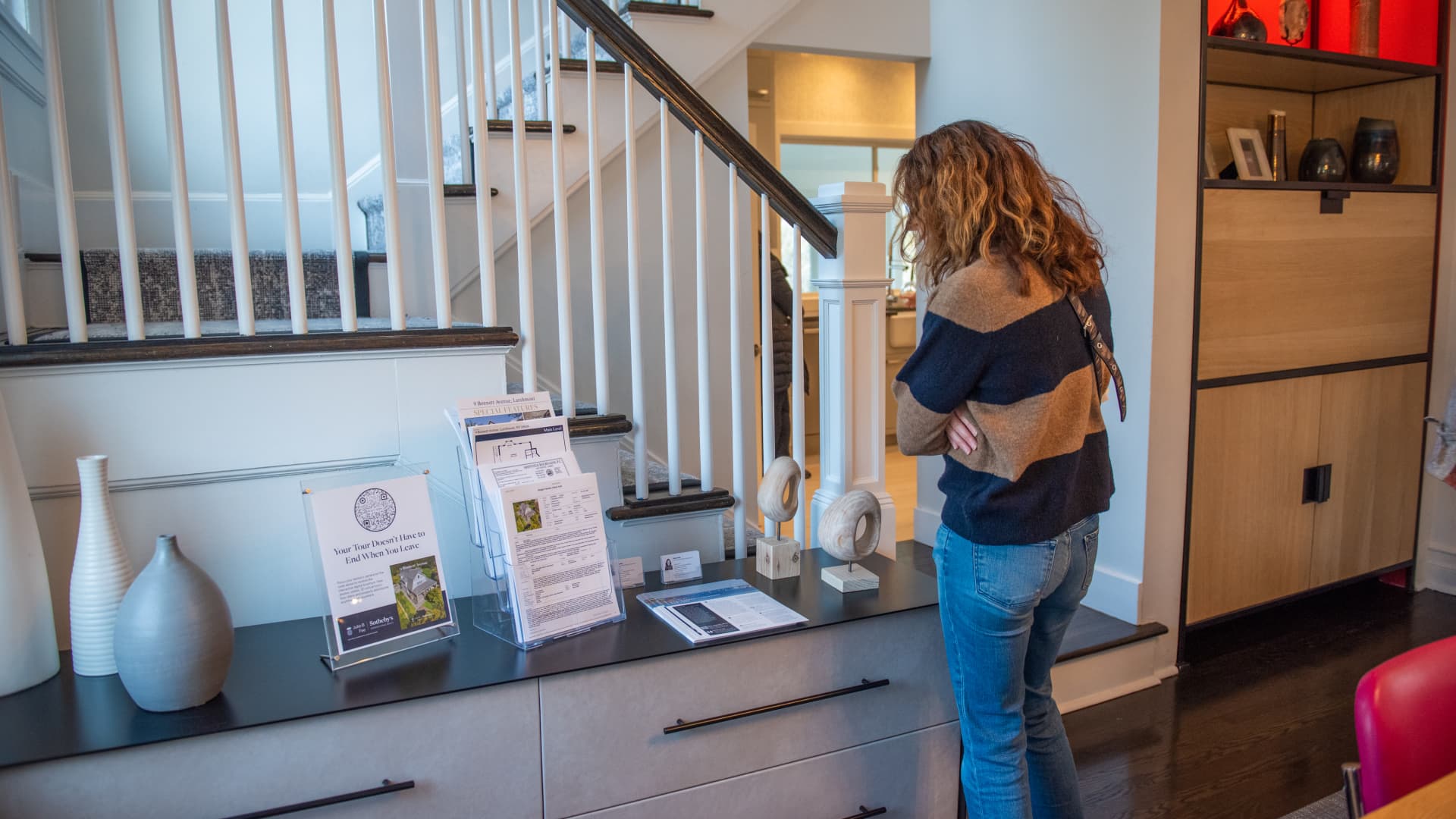March homes sales dropped despite a surge in supply. Here’s why.
2 min read
Prospective buyers attend an open house at a home for sale in Larchmont, New York, US, on Sunday, Jan. 22, 2023.
Tiffany Hagler-Geard | Bloomberg | Getty Images
Sales of previously-owned homes dropped 4.3% in March compared with February, to a seasonally adjusted, annualized rate of 4.19 million units, according to the National Association of Realtors. Sales were 3.7% lower than in March 2023. This came after a big jump in sales in February.
Rising mortgage rates are likely the cause of the slowdown.
This sales count is based on closings from contracts likely signed in January and February. Mortgage rates stayed lower in January, in the mid 6%-range on the popular 30-year fixed loan. They then shot higher in February.
Regionally, sales fell everywhere except in the Northeast, where they rose 4.2% month-to-month. Sales fell hardest in the West, down 8.2%. Prices are highest in the West.
“Though rebounding from cyclical lows, home sales are stuck because interest rates have not made any major moves,” said Lawrence Yun, NAR’s chief economist in a release. “There are nearly six million more jobs now compared to pre-COVID highs, which suggests more aspiring home buyers exist in the market.”
Inventory did improve slightly, rising 4.7% month-to-month to 1.11 million homes for sale at the end of March. That’s a 3.2-month supply at the current sales pace. Inventory is now up 14.4% higher than March of last year.
More supply did not cool home prices, however. The median price of an existing home sold in March was $393,500, up 4.8% from the year before. It’s also the highest price ever for the month of March. The annual comparison was, however, slightly lower than the month before.
The spring housing market is getting more competitive, and moving faster. The typical home sat on the market for just 33 days compared with 38 days in February.
Investors pulled back a bit, making up 15% of sales, compared with 21% in February and 17% in March of last year. First-time buyers did make a comeback though, accounting for 32% of sales, up from 26% in February and 28% the year before.
All-cash purchases accounted for 28% of sales, down from 33% in February but up from 27% one year ago. Pre-pandemic, that share was generally around 20%.
Mortgage rates have moved even higher this month, with the average rate on the 30-year fixed hovering around 7.5%, according to Mortgage News Daily.
“Every time you get to that round number, it is always that psychological barrier,” Yun said.







